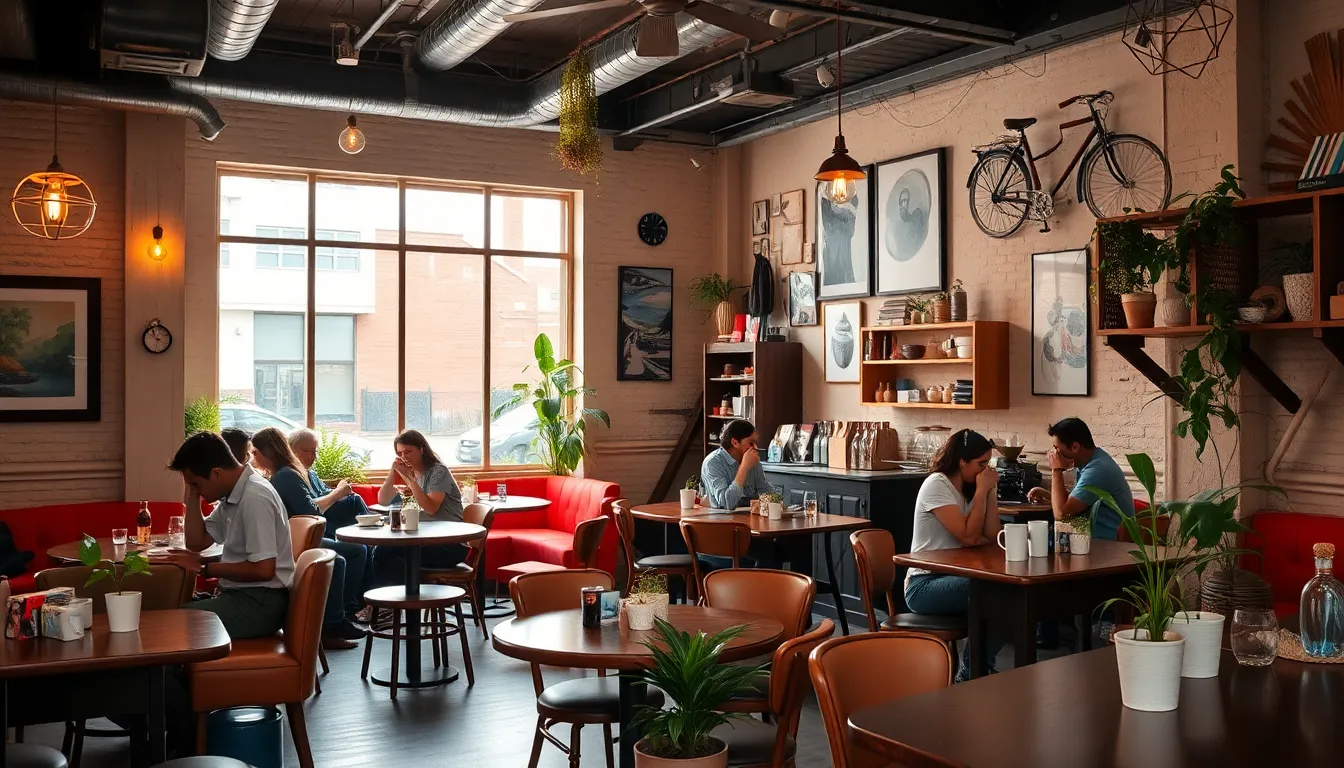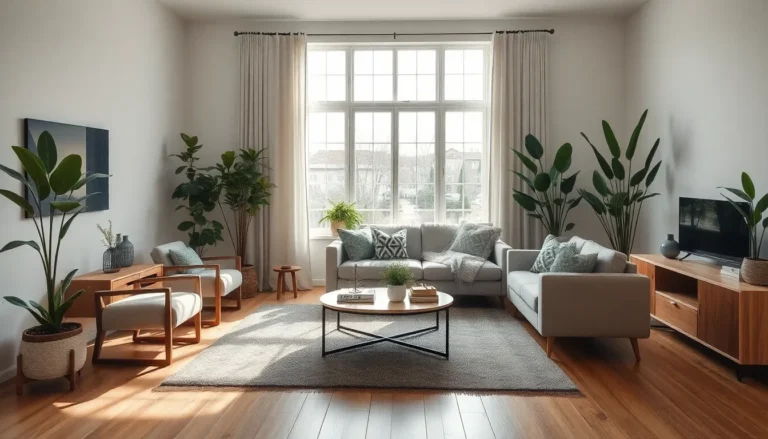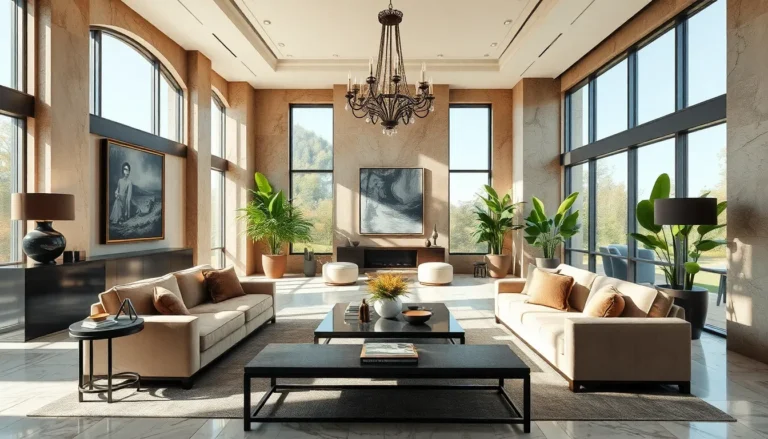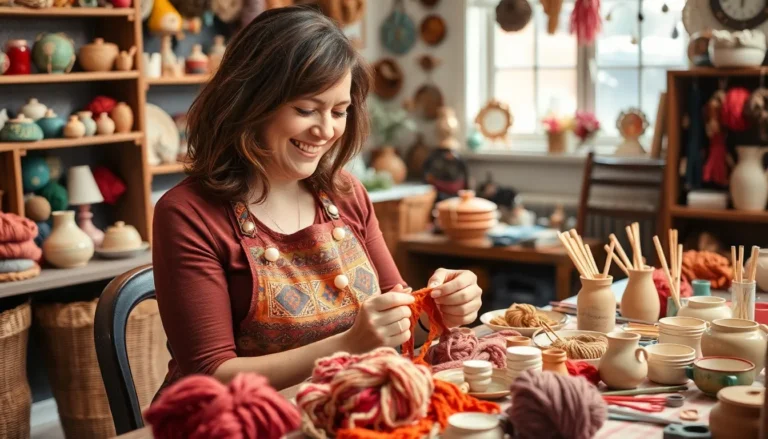Table of Contents
ToggleThematic design isn’t just about slapping a few matching colors together and calling it a day. It’s the secret sauce that transforms ordinary spaces into extraordinary experiences. Imagine walking into a room that tells a story, where every detail harmonizes to create an immersive atmosphere. That’s the magic of thematic design—it’s like giving a personality to a space that makes you want to stay forever.
From cozy coffee shops that whisk you away to Parisian streets to vibrant offices that spark creativity, thematic design captures attention and stirs emotions. It’s not just for the pros; anyone can harness its power to elevate their environment. So, buckle up and get ready to dive into the world of thematic design, where creativity knows no bounds and every corner has a tale to tell. Who knew design could be this much fun?
Overview of Thematic Design
Thematic design involves creating environments that evoke specific emotions and narratives. Elements such as color schemes, textures, furniture, and artwork all contribute to the overall experience. Through thoughtful curation, designers can transform a space, making it reflect a unique theme and atmosphere.
Various settings benefit from thematic design. Coffee shops can feel cozy and welcoming, while creative offices may inspire innovation and collaboration. Each element within the space plays a crucial role in conveying the desired message. Lighting choices, for example, can enhance mood and highlight focal points.
Incorporating storytelling into the design process adds depth. This approach allows designers to weave narratives throughout the environment. Visitors or employees might not only enjoy the aesthetics but also engage with the theme on a deeper level.
Trends in thematic design often draw inspiration from cultural, historical, or natural elements. Designers research these influences to create rich, immersive experiences. By analyzing patterns and preferences, they tailor designs that resonate with specific audiences.
Potential exists for every individual to explore thematic design. Resources such as design blogs, online courses, and community workshops provide accessible entry points. Experimenting with different themes fosters creativity and encourages personal expression.
Overall, thematic design transforms not just the physical space, but also the emotional landscape. Every detail matters in crafting environments that leave a lasting impression. Designers continuously push boundaries to redefine what a space can represent, making it an exciting field for exploration.
Key Elements of Thematic Design
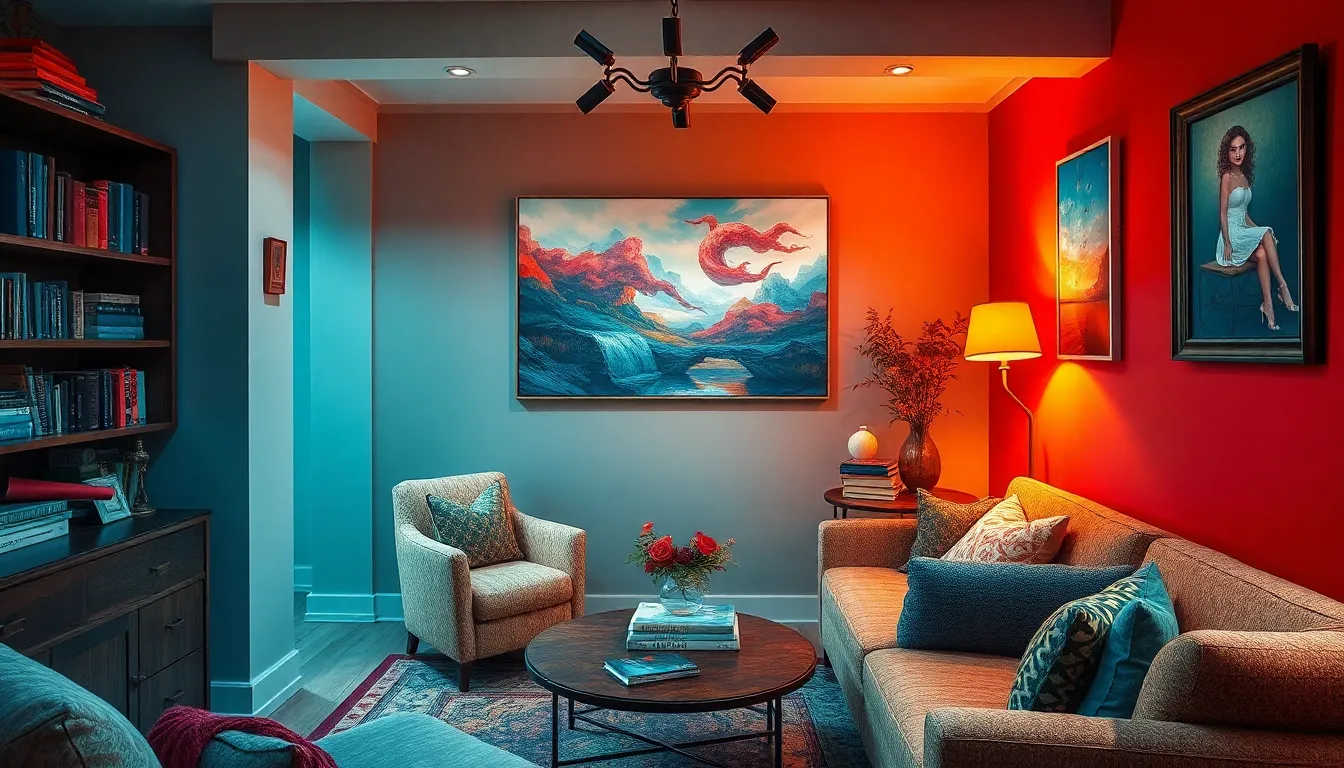
Thematic design relies on several key elements that collectively enhance the immersive experience. Each component plays a significant role in conveying the theme and emotional resonance of a space.
Color Schemes
Color schemes set the mood and evoke specific emotions. Designers choose palettes that align with the intended narrative, often using complementary colors to create harmony. Bold hues capture attention, while softer tones promote relaxation. For example, warm colors like reds and oranges can stimulate energy, whereas cool colors such as blues and greens often instill calmness. Thoughtful combinations enhance storytelling, allowing colors to unify diverse design elements.
Typography
Typography establishes a visual voice and reinforces the theme. Selecting the right typefaces creates a sense of cohesion throughout the design. Serif fonts often convey tradition and elegance, while sans-serif fonts evoke modernity and simplicity. Size and style variations within the text further emphasize important messages. Designers may also consider spacing, ensuring clarity and readability. By integrating typography with other elements, the overall experience becomes more engaging and communicates effectively.
Imagery and Graphics
Imagery and graphics complement the design’s narrative by adding visual interest. High-quality images draw attention and evoke feelings relevant to the theme. Designers often use illustrations, photos, and textures that resonate with the audience for a more immersive experience. Strategic placement of graphics guides the viewer’s eye, making the space feel alive. Consistent styles enhance the theme, reinforcing the emotional tone through visual storytelling.
Benefits of Thematic Design
Thematic design offers significant advantages that enhance environments and user interactions.
Enhanced User Experience
Immersive spaces captivate users, encouraging them to engage more deeply with their surroundings. Thoughtfully designed elements resonate with visitors, making them feel emotionally connected. Factors like lighting, colors, and textures contribute to comfort, promoting a positive atmosphere. Engagement increases when users find pleasure and excitement in their experiences. Memorable encounters lead to repeat visits and brand loyalty.
Brand Identity
Strengthening brand identity relies heavily on thematic design elements. A cohesive visual representation reinforces brand values and creates memorable impressions. Unique themes reflect company culture while fostering recognition among target audiences. Designers utilize color schemes and motifs to align with brand messaging. Consistency in thematic design across various platforms enhances credibility and trust.
Storytelling
Storytelling transforms spaces into narratives, making them more engaging. Every design element works together to communicate a message, encouraging interaction. Incorporating themes invites users to experience a journey, sparking curiosity and exploration. Designers skillfully create connections between visual elements and the storyline. As visitors immerse themselves in the narrative, they form deeper emotional ties to the environment.
Challenges in Thematic Design
Thematic design presents various challenges that designers must navigate to create cohesive experiences.
Consistency
Maintaining consistency across all design elements proves crucial. Every aspect, from color palettes to typography, needs alignment with the central theme. Subtle deviations can confuse audiences, undermining the intended emotional resonance. For instance, mixing modern fonts with vintage aesthetics can disrupt visual harmony. Effective solutions involve establishing clear guidelines during the design process, ensuring that all components collaborate seamlessly. Designers often reference mood boards to align stakeholders on the envisioned outcome. Regular reviews can also enhance focus, promoting adherence to the original concept as the project evolves.
Flexibility
Adapting designs to cater to evolving audience preferences can be challenging. While a consistent theme is essential, the dynamic nature of trends requires flexibility. Designers should remain open to incorporating new ideas without straying too far from the established theme. Feedback from users can offer valuable insights into anticipated changes, suggesting necessary adjustments. Balancing tradition and innovation helps to keep thematic design fresh and engaging. Teams often brainstorm together to generate innovative solutions that respect the original vision while allowing for necessary updates, fostering a collaborative atmosphere throughout the design journey.
Thematic design serves as a powerful tool for crafting unique experiences that resonate deeply with individuals. By thoughtfully integrating elements like color, typography, and imagery, designers can create spaces that not only tell a story but also evoke emotions. This approach transforms ordinary environments into memorable journeys that invite exploration and connection.
As the landscape of design continues to evolve, embracing thematic design can enhance brand identity and foster engagement. By balancing consistency with adaptability, designers can create immersive experiences that captivate audiences. Ultimately, the art of thematic design enriches both the physical and emotional realms, leaving a lasting impact on all who encounter it.

